Taste Memories
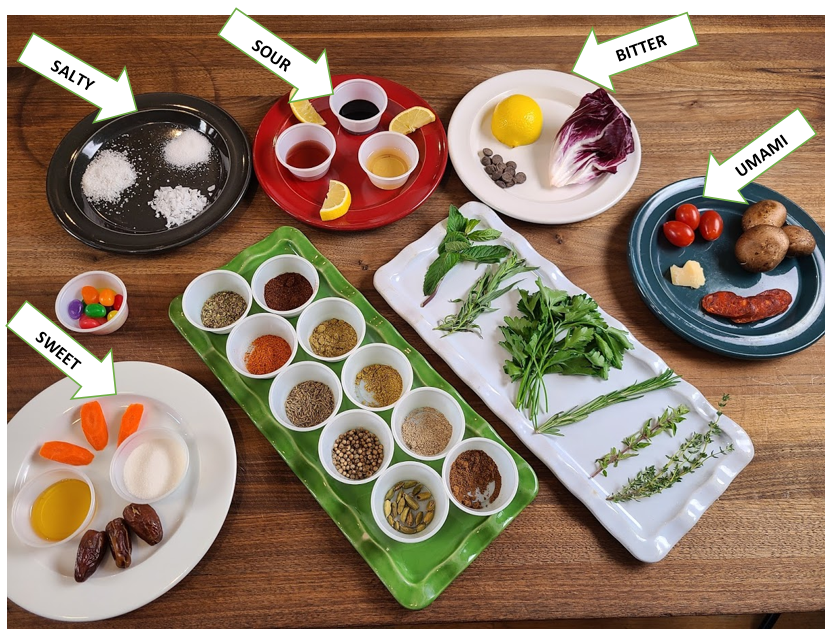
I have frequently talked about “taste memories” in previous blog posts: How the taste or aroma of something brings back memories from long ago. They often take me to a place or event with loved ones and make me smile.
The smell of pasta sauce long-simmering on the stove reminds me of both my grandmother’s kitchen, as well as my mom’s. Whenever I make a batch of baked beans for the summer holidays, it takes me right back to my Aunt Edie’s house, when our big, extended family would get together to celebrate… well, nearly anything! Tasting my own fried zucchini blossoms sends me back to being a kid in my grandparent’s house where, fresh from the garden, they would be eaten as quickly as they were fried up. Being in an Italian bakery just sends me over the moon, as the aromas bring back all kinds of memories of “special” occasions with these wonderful delights, both as a child and an adult.
 Taste memories are wonderful! Recently, though, I learned just how important they are: both to have those stored memories and to actually intentionally add to them over time. A little over a month ago, I found myself with COVID (I’m fine now). I was out of town and, obviously not being able to get on a plane to come home, ended up quarantining in a corner of my cousin’s home, well-isolated from him and his family. Both my cousin and his wife are excellent cooks, and with one having Italian roots and the other Mexican, they are never at a loss for wonderful, flavorful meals!
Taste memories are wonderful! Recently, though, I learned just how important they are: both to have those stored memories and to actually intentionally add to them over time. A little over a month ago, I found myself with COVID (I’m fine now). I was out of town and, obviously not being able to get on a plane to come home, ended up quarantining in a corner of my cousin’s home, well-isolated from him and his family. Both my cousin and his wife are excellent cooks, and with one having Italian roots and the other Mexican, they are never at a loss for wonderful, flavorful meals!
On my second day of quarantine, I lost my sense of smell, but I could still taste. Now, taste without smell is an interesting phenomenon. Try holding your nose and tasting something (don’t cheat, really hold your nose!). Your tongue can only differentiate five basic tastes: salt, sweet, sour, bitter and umami. You will taste only one or some combination of these, depending on what you’ve chosen to eat. My first indication that something was amiss was being given a bagel for breakfast one morning, spread with cream cheese and topped with slices of avocado. It looked wonderful, but all I tasted was salt. This was going to be interesting!
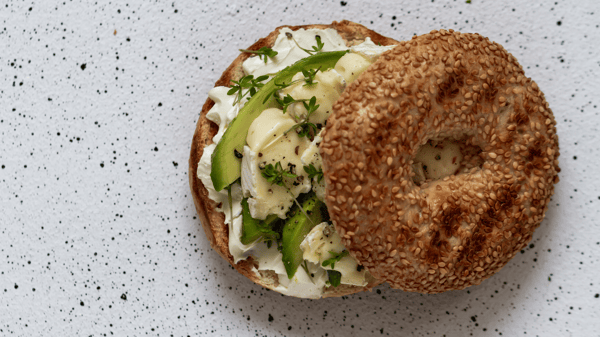 To get technical for a moment, it’s all about taste receptors on the tongue. Without getting too technical once those taste receptors are activated, a message is transmitted to the brain via the nerves and… taste! Here are some examples of each of the five basic tastes and where their receptors lay on your tongue:
To get technical for a moment, it’s all about taste receptors on the tongue. Without getting too technical once those taste receptors are activated, a message is transmitted to the brain via the nerves and… taste! Here are some examples of each of the five basic tastes and where their receptors lay on your tongue:
- Salt taste comes from not only salt itself, but also foods like anchovies, olives and soy sauce. Receptors for salt lay along the front and side rims of the tongue.
- Sweet taste automatically makes you think of granulated sugar, but there are many forms: honey, agave, maple syrup to name a few. “Non-sugar” sweetness may be found in parsnips, scallops, bananas and dates. Sweet receptors lay along the front center quarter of the tongue.
- Sour taste includes not only the more obvious lemons and limes, but also yogurt and vinegar. Sourness is what results in that mouth-puckering sensation, generally caused by acids. Receptors for sour lay along each side of the tongue.
- Bitter taste encompasses foods like radicchio, collard greens and coffee. Interestingly, bitterness on its’ own may be overwhelming, but a little bitterness can make food very interesting. Bitter receptors lay on the center back quarter of the tongue.
- Umami taste was first discovered in the early 1900s by a Japanese chemist, but it took many years for it to be officially recognized as a “taste”. It refers to the savory or meaty flavor in food and roughly translates to “delicious”. Some examples of umami taste can be found in aged/smoked/well-seared meats, mushrooms, tomatoes and seaweed. Umami receptors lay on the entire front three-quarters of the tongue.
During the time I was unable to smell, these were the only tastes I experienced. I couldn’t smell the yeast in that bagel and the salt in the cream cheese overwhelmed any sweetness I might have tasted in the dough. Knowing that the meals my cousin and his wife would prepare would be delicious and full of flavor, I really wanted to find a way to enjoy them. That’s where my taste memories came into play. In this case, I’m not referring to those memories that take me down a Memory Lane of long-ago experiences, but my actual memory of what food tastes like (along with their aromas!), including the herbs, spices and all those supporting actors that go into food preparation.
So when I knew my cousin was going to prepare ribs in his smoker, I asked him what was in the rub he used. Cumin, chili powder, coriander, a bit of brown sugar – I could so clearly remember what these tasted like! While I really missed being able to smell the smoke from the smoker outdoors, when those smoked ribs were set out for me I honestly felt like I could taste the full flavor – that is, the taste as well as the smell – because my taste memories sort of “filled in the blanks.” Of course, it didn’t hurt that the meat was falling off the bone and any fat had become meltingly soft. Yet, it was incredible to realize that my brain could do that!
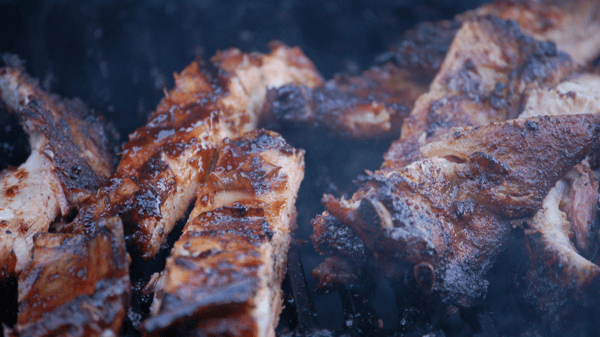 Later on there was Chicken Tinga with a tomatillo salsa. My taste memories of chipotle chilis, adobo, oregano, tomatoes and the texture of the shredded chicken filled in all the blanks of what my taste was limited to. The crunchy tortilla gave it familiarity and her tomatillo salsa may or may not have been exactly like mine, but I used my memory of what mine tasted like to enjoy it.
Later on there was Chicken Tinga with a tomatillo salsa. My taste memories of chipotle chilis, adobo, oregano, tomatoes and the texture of the shredded chicken filled in all the blanks of what my taste was limited to. The crunchy tortilla gave it familiarity and her tomatillo salsa may or may not have been exactly like mine, but I used my memory of what mine tasted like to enjoy it.
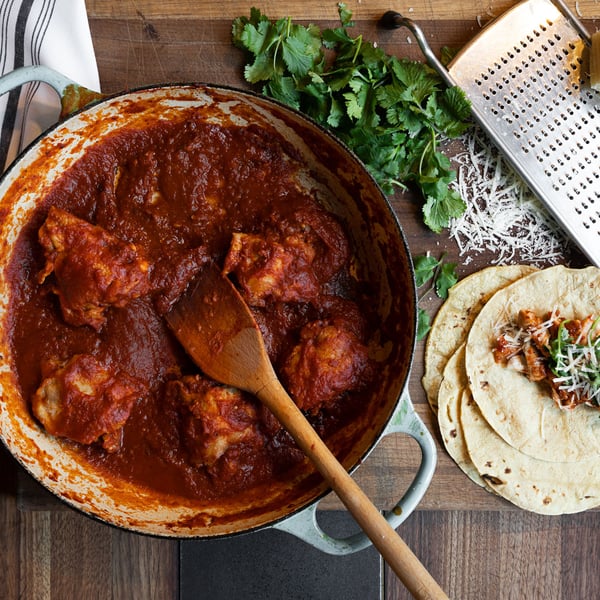 Those are but two examples of what taste memories – or taste knowledge – can do for you. If you try different flavors, try different combinations, your knowledge of what you are eating increases, and at the same time, so do your memories. You don’t have to lose your sense of smell to take advantage of that knowledge, those memories. They will come in handy every single day with every meal you prepare. Getting to know ingredients and their flavor profiles will allow you to add that “something” that’s missing from a sauce or dressing; it will allow you to trust yourself to try seasoning simple chicken thighs with spices and herbs that you may not have otherwise thought of; it will let you know how to balance out the flavors in the next salad you make.
Those are but two examples of what taste memories – or taste knowledge – can do for you. If you try different flavors, try different combinations, your knowledge of what you are eating increases, and at the same time, so do your memories. You don’t have to lose your sense of smell to take advantage of that knowledge, those memories. They will come in handy every single day with every meal you prepare. Getting to know ingredients and their flavor profiles will allow you to add that “something” that’s missing from a sauce or dressing; it will allow you to trust yourself to try seasoning simple chicken thighs with spices and herbs that you may not have otherwise thought of; it will let you know how to balance out the flavors in the next salad you make.
Even with all the cooking I do, with the return of my sense of smell, I now have a new respect for the knowledge I’ve accumulated over the years. And I don’t intend to stop trying new foods and flavor combinations to add to that!
If you’d like to explore taste and flavor interactions more fully, The Chopping Block offers an amazing class called Flavor Dynamics. This class will allow you to become more aware of how flavors balance one another and how to enhance your own creativity – because, after all, isn’t that what cooking is all about?
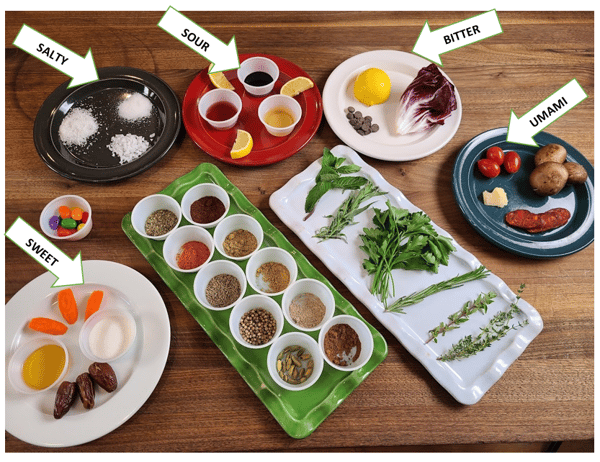 Join us on Sunday, January 16, 2022 at 11am at Lincoln Square for our next Flavor Dynamics class.
Join us on Sunday, January 16, 2022 at 11am at Lincoln Square for our next Flavor Dynamics class.

